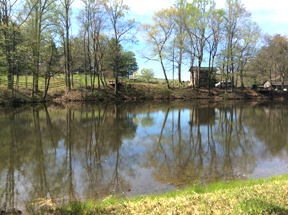Nature is my muse. I'm inspired by its unrelenting qualities of rejuvenation and renewal necessary for survival. As a part of nature, I believe we need to respect the connection we have with the natural environment. In nature things change over time, evolve. Like a forest goes through an ecological succession, so do we as individuals evolve and are, at present, a compilation of bits and pieces of the experiences we have traveled. This idea I want to translate in my art.
Cold wax and oil lends itself perfectly to expressing this idea. It affords the opportunity to show a history of the painting by building up layers, obscuring what's beneath, and removing layers to reveal bits of past layers. It represents the history of a life that becomes an aggregation of our observations and experiences.
Cold wax was a widely used medium in Greco-Roman art beginning in the 5th century BC. Cold wax can be used to make oil colors thicker and more matte. The wax I use is Gamblin Cold Wax. It is made from naturally white unbleached beeswax, alkyd resin and odorless mineral spirits. It can be thinned to brush on or mixed 1:1 with oil paint and applied with a palette knife, brayer or brush. It can also be used as a wax varnish over a dry oil painting. When I use a 1:1 ratio I use a rigid support. If I used canvas or linen, the stretching and shrinking of the soft supports could cause the wax to crack. However, if you want to use a flexible support, mix the cold wax with a Galkyd Gel 1:1 to add flexibility to the wax.
A nice advantage to using cold wax with oil, rather than just oil painting, is that you do not have to varnish, so you do not have to wait for the painting to cure, which could take several months. The cold wax paintings dry to touch within about a week. They would take more time to thoroughly dry, but because they don't have to be varnished you can ship or exhibit them within a week or so. I do buff some of mine with a soft cloth after a week when I want a slight shine.
I've just begun to put some of my pieces on my website. I also have some pieces exhibited at
Hillsborough Gallery of Arts including the image above. You can check out my website by clicking the image above. Jude Lobe



No comments:
Post a Comment